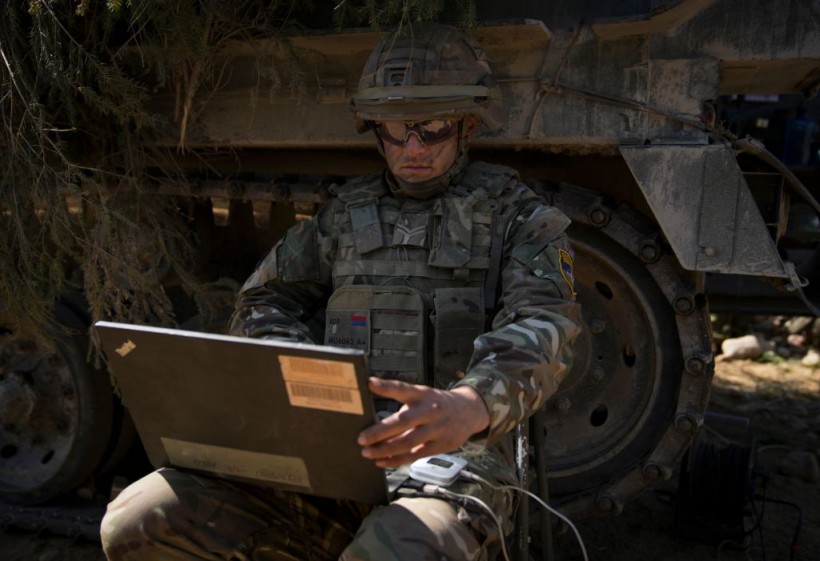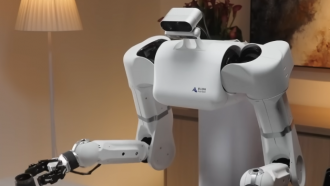Regulators, civilians, and military officials from all over the world have reportedly convened during the Vienna Conference on Autonomous Weapons.
Aiming to discuss and hopefully push forward conversations on how to regulate AI-powered militarized technology.
Algorithms and unmanned aircraft are already assisting military strategists in determining whether or not to hit targets as autonomous weaponry continues to spread quickly, even across battlefields in Gaza and Ukraine.
 (Photo : Photo by Jaap Arriens / AFP)
(Photo : Photo by Jaap Arriens / AFP)
More than a hundred nations' worth of civilian, military, and tech officials gathered in Vienna on Monday to talk about how their economies can regulate the fusion of AI and military technologies, two fields that have recently enthralled investors and driven stock values to all-time highs.
According to Jaan Tallinn, an early investor in Alphabet Inc.'s AI platform DeepMind Technologies, the issue of managing killer robots is increased by the spread of international war and financial incentives for businesses to develop AI.
Alexander Schallenberg, the foreign minister of Austria, compares artificial intelligence to the atomic bomb and says that we are now experiencing the "Oppenheimer Moment" for the current age.
J. Robert Oppenheimer is a famous scientist who contributed to the development of the atomic bomb in 1945 and later pushed for restrictions on the proliferation of nuclear weapons.
Read Also: Austria Urges Global Action on 'Killer Robots' as AI Weapon Concerns Rise
AI Military
Governments from all around the world have started working with businesses that are incorporating AI techniques into defense.
Most notably, a video of the debut demonstration of an unmanned, AI-controlled F-16 aircraft practicing many aerial combat scenarios against a human pilot was recently made public by the US Defense Advanced Research Project Agency (DARPA).
The video was taken in September of last year at Edwards Air Force Base in California when the US Air Force observed two F-16 aircraft dogfighting.
At up to 1,200 miles per hour, the two planes performed aggressive and protective maneuvers and engaged in dogfighting or battle within visual range. At one point, they were only 2,000 feet (610 meters) apart.
AI-Powered Aircraft
DARPA made public a video of the nose-to-nose aerial battle, which included the two planes circling around and inside one another as they flew through the sky.
The autonomous aircraft, dubbed VISTA, is an AI-equipped F-16 that has been converted for autonomous flight.
Although the X-62A's human pilots had controls to turn off the AI system, DARPA says the pilots never had to use the safety switch. However, DARPA does not say which aircraft prevailed in the combat.
Since its launch in December 2022, the aircraft has performed at least 21 test flights, amounting to over 17 hours of flight time. This is the first time a fighter plane has been flown by machine learning.
Related Article: US Army Is Looking Into AI's Potential for Battle Planning Through Starcraft II
 (Photo: Tech Times)
(Photo: Tech Times)





